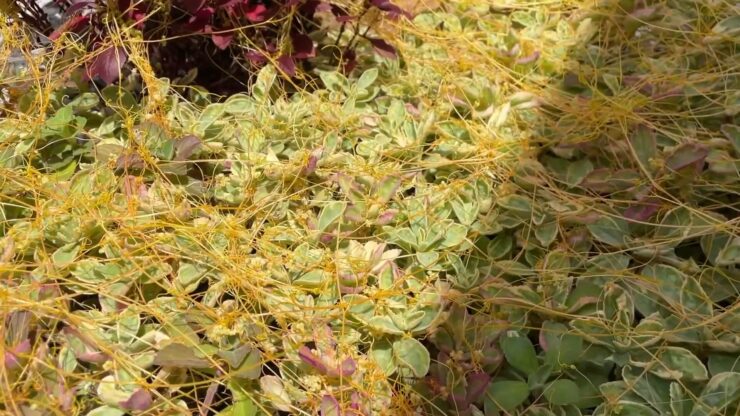Dodder (Cuscuta Sp.) is a parasitic plant that doesn’t make its own food like most other plants. It steals all its food from other plants through suckers that grow into the other plant’s bark. The vine has no roots, no leaves, no chlorophyll!!!
Dodder is called strangleweed, love vine, angel’s hair, and witches shoelaces and comprises a group of over 100 species.
Dodder seeds can lay dormant for almost ten years. Interestingly this parasitic plant has no connection with the ground. Once it starts growing it quickly loses any connection to the ground and relies totally on its host for nourishment.
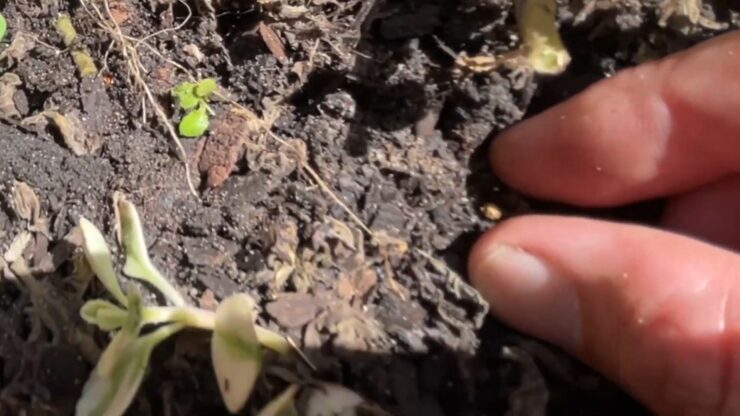
It is one of the most common types of vine found in nature. However, unlike other species, this one is highly invasive and can pose a challenge if you don’t start dealing with it on time.
Here are some tips that will help you get rid of this plant:
Identify the Dodder Vine:
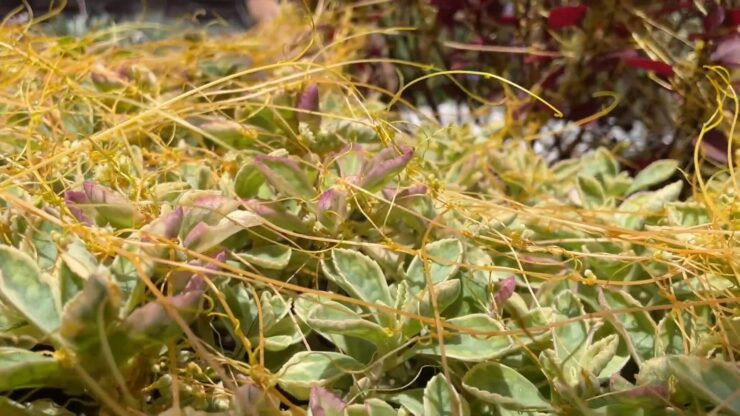
Look for spaghetti-like vines wrapping around host plants. Early detection is crucial to prevent spreading.
Manual Removal:
Wear gloves and carefully pull the vine from the host plant, ensuring that all parts are. Any leftover piece can regrow.
Cut Affected Host Plants:
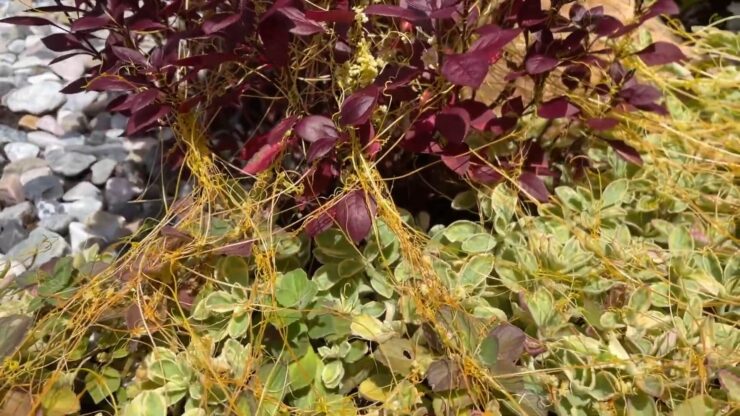
If the vine heavily infests certain plants, remove and destroy these plants to prevent further spread.
Regular Mowing:
Keep your grass short to spot dodder vine early and make it harder for the vine to establish itself.
Pre-emergent Herbicide:
Apply a product specifically designed to prevent dodder seeds from germinating. Follow the label instructions carefully.
Post-emergent Herbicides:
If manual removal and pre-emergent herbicides are insufficient, use a post-emergent herbicide that targets broadleaf plants but is safe for your grass type.
Solarization:
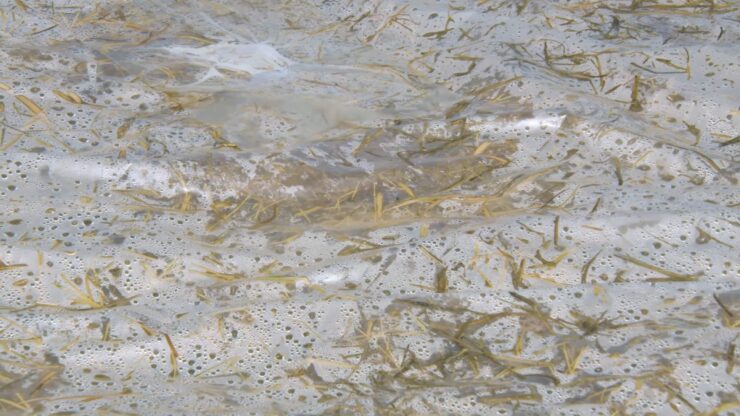
Cover the affected area with clear plastic for several weeks during the hot summer months. The heat will kill the vine and its seeds.
Healthy Lawn Practices:
Water your lawn properly, aerate it, and use appropriate fertilizers. A healthy lawn is less prone to infestations.
Proper Disposal:
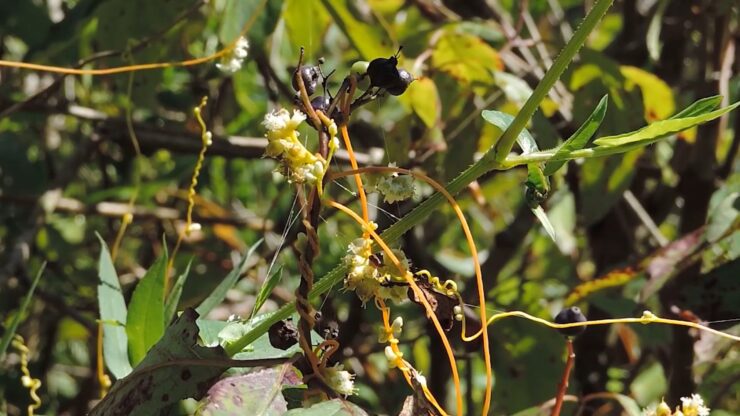
Do not compost dodder vine or affected plants. Bag them and dispose of them in the trash to prevent spreading.
Regular Monitoring:
Even after treatment, keep an eye out for new signs of dodder vine. Early detection is key to controlling this pest.
Professional Help:
If you struggle to control dodder vine, consider consulting a lawn care professional for tailored advice and treatments.

